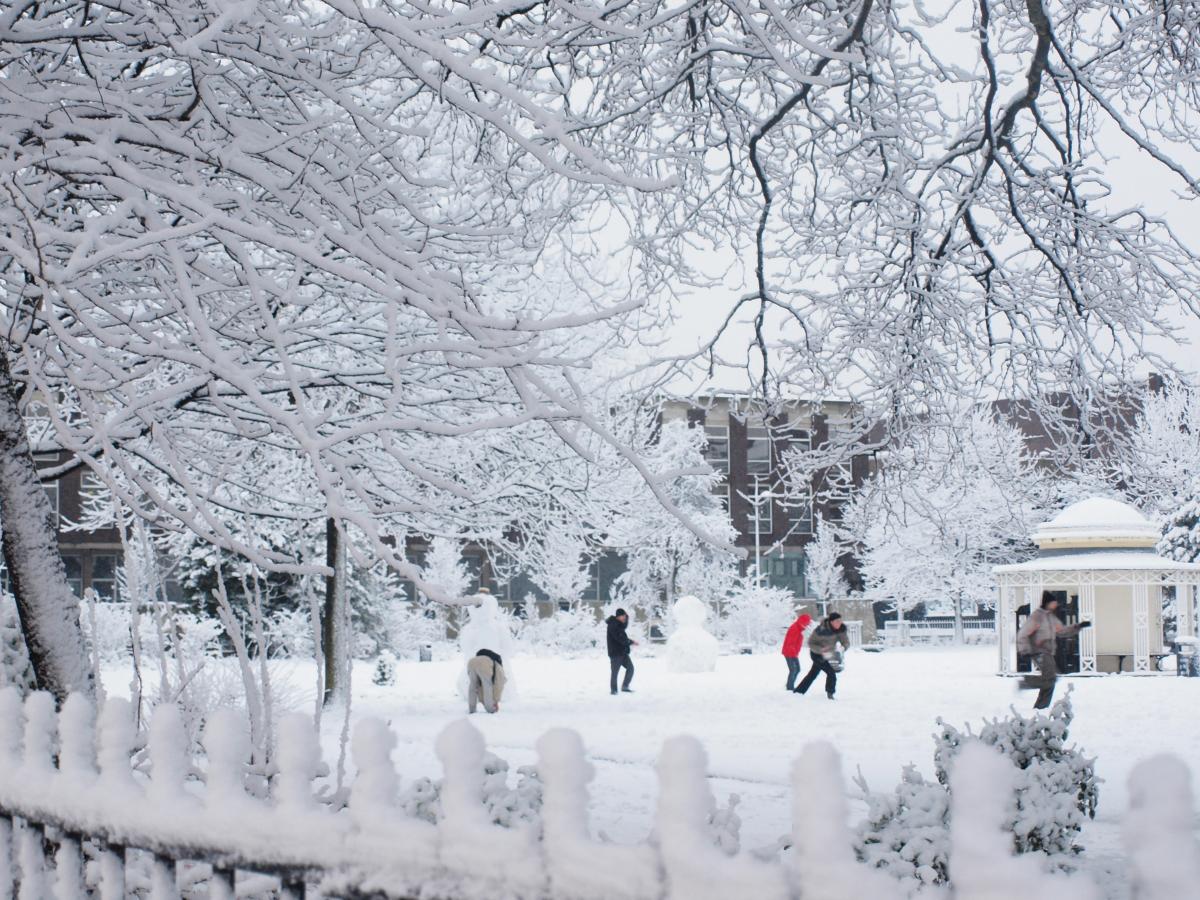
Photo by Some Driftwood via Flickr
If you live anywhere except California, your winter was a doozy. Freezing temperatures; snowstorm after snowstorm after snowstorm; the Abominable Snowman setting up shop in lower Manhattan. It was a monster winter. In fact, there was so much snow, Senator James Inhofe famously seized the moment to bring a snowball to the Senate floor.
Climate scientists claim that the climate is getting warmer, but refuting them was child’s play for Inhofe. Snow! He figured it out! All those data points; all that research; all those scientific papers—wasted time! To reveal the scientific bankruptcy of climate change claims all we had to do was get our heads out of the data and take a single step outside. What would we see? Snow! And more snow! And snow only happens when it’s cold. Therefore, no climate change. Checkmate, climate scientists!
There are two big problems with this line of thought, if it can be called that, but let’s start with the most basic one:
Misconception: Weather and climate are one and the same.
Correction: Weather and climate are related, but different things.
No doubt you are thinking that everyone should know this already. After all, the Next Generation Science Standards recommend introducing the basic distinction between weather and climate in kindergarten classrooms. But many people can’t make the connection to climate change.
So let’s start with the basics (which Stephanie Keep also covered a few months ago). I’ll focus on you poor New Englanders, who got hit with over 100 inches of snow this year. I’m sure that amid the drifts many of you daydreamed of quitting your jobs, leaving your homes, and moving to the Florida Keys. Maybe even some of you did (if so, send me a postcard!). The thought of enduring more winters like this would make anyone snap!
Why would a snowbound New Englander dream of moving to the Keys? Well, presumably not for the snorkeling or the marathon or the early bird specials, but for the lovely warm climate. And when you were packing in your imagination, did you include your long underwear, wool socks, and balaclava, or just your skimpiest swimwear? Obviously the latter. And the reason again comes down to climate.
The best metaphor to understand the distinction between weather and climate I’ve ever heard is this: if weather is what you are wearing today, climate is your whole wardrobe. In other words, weather is short-term, what is happening day to day, while climate is weather over the long-term: decades to centuries to millennia. (By convention, NOAA notes, climate is weather averaged over at least a thirty-year period.) If you headed down to the Florida Keys, the wardrobe you brought with you was probably a lot lighter than the one you were wearing when snow-bound in New England.
So how does climate change fit into all of this? Well, it’s not called “weather change”—we know that the weather will change day to day. (Especially in New England. As Mark Twain quipped, “If you don’t like the weather in New England, just wait a few minutes.”) Rather, it is “climate change,” in which the overall trend of weather is changing—getting overall warmer—over long periods of time (i.e., decades). And it’s “global climate change” because it’s occurring, not just here or there, but all over the world.
Which takes us to our second misconception:
Misconception: Record snowfalls disprove climate change.
Correction: Record snowfalls are consistent with climate change.
By bringing a snowball into the Senate, Inhofe seemed to claim that even regular snowfall would disprove climate change, but debunking the more plausible misconception re: record snowfalls suffices to debunk Inhofe’s.
Skeptical Science, the invaluable repository of articles debunking climate change denial has a good summary of what is wrong about this thinking:
To claim that record snowfall is inconsistent with a warming world betrays a lack of understanding of the link between global warming and extreme precipitation. Warming causes more moisture in the air, which leads to more extreme precipitation events. This includes more heavy snowstorms in regions where snowfall conditions are favorable. Far from contradicting global warming, record snowfall is predicted by climate models and consistent with our expectation of more extreme precipitation events.
So did Senator Inhofe bring evidence supporting climate change to the Senate floor despite himself? After all, if record snowfall is a predictable result of a changing climate, a snowball is really the wrong symbol to bring in the service of climate change denial.
Keep in mind that, as the correction to the first misconception notes, one giant snow storm is weather, not climate. A single record snowfall isn’t of itself evidence for climate change. But lots and lots of record snowfalls over a longer period of time? Well, that may be evidence for climate change.
In short, assessing a changing climate is a little more complex than poking your head out the window—or out of your den, if you happen to be a groundhog—and looking for snow, rain, or sunshine. The climate is a larger, more abstract concept than day-to-day weather. As a result, regardless of what Senator Inhofe might think, a snowball fight on the floor of Congress isn’t going to change the science on climate change—but it might be a lot of fun to watch!

